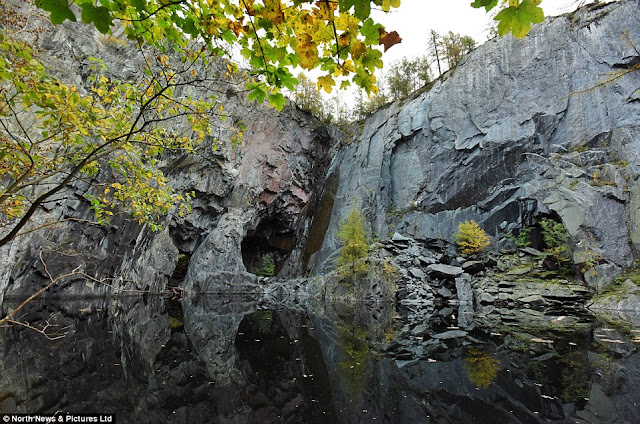Without any
doubt, The “Pikeville Cut-Through Project” is an amazing engineering wonder
that has been easily called “the 8th wonder of the world”. It is nestled in the
Appalachian Mountains, in Kentucky, along the Levisa Fork a tributary of the
Big Sandy River lies the flourishing city of Pikeville. However, it’s a small
city of less than 7,000 inhabitants, but those 7,000 must be some of the most
vital people on the planet earth. They were badly pissed that they had to wait
at the railway crossing though the coal cars went by spew out dirty black dust
upon the peoples. Moreover, they were also pissed at their river Levisa Fork
for breaking banks every year and flooding their city, hence they undertook one
of the largest earth-moving projects in the whole Western hemisphere, third
behind the Big Dig and the Panama Canal. The mega project was led by former
Mayor William C. Hambley, (a Pikeville native, was a medical doctor before he
become involved in politics), the Pikeville Cut-Through Project officially started
in November of 1973 with the motive of relieving the barrage of flooding that
the City of Pikeville experienced every year. The project took 14 years to
complete, during which a total of 18 million cubic yards of earth were moved
which went into filling the empty riverbed. The Cut-Through Project also
provided the City of Pikeville with more room for development, due to the
moving of the Levisa Fork of the Big Sandy River away from downtown Pikeville,
and released the City of congestion caused by the railroad and the three major
highways that passed through it.
Therefore,
they butchered a mountain and created a kilometer-long and 400-meters-wide
channel, called the Pikeville Cut-Through. Through this cut they diverted a
four-lane US Highway, some railroad tracks and a freaking river that originally
looped around the city. The effort he had made, earned him the title of “the
man who moved a mountain.” He felt that the railway tracks separated his town
and the local college, making a "wrong side of the track" attitude
and the substandard housing that came with it. He also loathed the dirty coal
cars that ran through the middle of Pikeville. Indeed the Pikeville Cut-Through
Project is a unique engineering feat that provides a shining example of cooperation
among agencies on a federal, state and local level. Being the second largest
earth removal project in the United States history, the Pikeville Cut-Through
Project is a marvel that visitors cannot miss.
The
monumental effort not only eradicated repeated flooding and relieved traffic
congestion, but it also delivered the City of Pikeville with 400 acres of new
land for expansion. Soon after, Pikeville underwent fast economic development.
At the moment it’s a prosperous center for commerce and the leading financial
and industrial center of the Appalachian region. The Pikeville Cut-Through
project was a massive achievement meticulously oversaw each phase of the
project, navigating this huge undertaking through numerous challenges and
eventually bringing this vision to life, and won many hearts. Moreover,
tourists can expect more than just an amazing view when visiting the
Cut-Through Project overlook. The overlook sits atop a magnificent mountain
surrounded by lovely scenery and the Bob Amos Park, which features a rubberized
oval walking track, hiking trail, horseshoe arena area, tennis courts,
basketball courts, soccer fields, baseball fields, and a YMCA. Hatfield and
McCoy River Trails is also located near the overlook and on weekend’s features
offers several relaxing activities like, canoeing, paddle boating, tubing, as
well as a paintball field. So, for a day of fun, consider having a picnic at
the Cut-Through and plan for a pleasant day of lush scenery and outdoor
adventure as well.







































